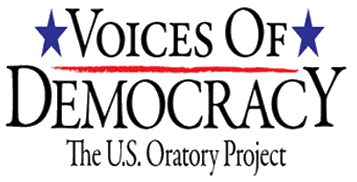JOHN F. KENNEDY, REPORT TO THE AMERICAN PEOPLE ON CIVIL RIGHTS (11 JUNE 1963)
Classroom Activities
- Watch the broadcast of President Kennedy’s speech, which is available here: https://www.jfklibrary.org/learn/about-jfk/historic-speeches/televised-address-to-the-nation-on-civil-rights. Does viewing the address change your impression of its message? If so, in what way? How important is Kennedy’s delivery?
- President Kennedy’s speech was prepared at the last moment. In fact, he had to extemporize the end of the address. Assume the role of White House speechwriter for a moment, and presume you have more time to revise the speech. What, if anything, would you change? Why?
- Look closely at the speech transcript, paying particular attention to President Kennedy’s claims that racial discrimination is wrong. Are any of these arguments persuasive with regard to the discrimination that still exists today? After all, members of ethnic minorities are still less likely to enjoy the privileges of being an American, as described by Kennedy. And another type of discrimination that he decried–employment discrimination that keeps some Americans from earning as much money as others–is a fact of life for most women.
- President Kennedy urged citizens to take action in their daily lives to solve the moral crisis of racial discrimination. However, he did not identify specific actions people could take. Do you think this is a weak point of his message? If so, what could Kennedy have said to make it easier for people to act?
Student Research
- Perhaps because it was drafted in haste, President Kennedy’s speech organization is not highly effective. (For instance: There is a significant jump from paragraph 3 to paragraph 4, and paragraph 13 is distanced from the speech’s other appeals related to foreign affairs.) Discuss how you might have edited the speech, with a focus on improving its organization–especially the flow of ideas–in order to improve the clarity and impact of its message. In particular, look over two organizational patterns that often are used in persuasive speeches: the Monroe’s motivated sequence pattern and the problem-cause-solution pattern; both are described here: http://kell.indstate.edu/public-comm-intro/chapter/11-6-organizing-persuasive-speeches/. See if you can use one of these patterns to configure Kennedy’s message more effectively.
- Research newspaper and magazine articles that criticized President Kennedy’s speech in the days and weeks after it was delivered. Write a short essay that summarizes their criticisms and explains whether or not you think they are valid.
- In his speech, President Kennedy stated that “the rights of every man are diminished when the rights of one man are threatened.” Research the origins of this idea in political theory. Then, research how civil rights leaders and activists used similar appeals. Finally, write a short position paper explaining whether or not you think Kennedy’s statement, and similar ones used by civil rights advocates, constitute a strong rationale for civil rights.
- Write a research paper comparing and contrasting President Kennedy’s June 11, 1963, with his speech during the desegregation of the University of Mississippi. An audio recording of that speech, which he delivered on September 30, 1962, is available here: https://www.jfklibrary.org/asset-viewer/archives/JFKWHA/1962/JFKWHA-132-002/JFKWHA-132-002
Citizenship Resources
- One of the key themes of President Kennedy’s speech is the right to attend desegregated schools. But according to UCLA’s Civil Rights Project, Black students are just as segregated today as they were in the 1960s, before serious enforcement of federal desegregation orders went into effect. For more information, visit: https://www.kqed.org/lowdown/30098/why-have-americas-public-schools-gotten-more-racially-segregated. Research the difference between these two concepts: de jure segregation and de facto Then, consider the following questions: What are the various reasons for the persistence of school segregation? To what extent does explicit racism underlie the problem? What can citizens do to address the problem?
- Another key theme of President Kennedy’s speech is the right to be served in places of public accommodation. The legislation he proposed, which ultimately was enacted as the Civil Rights Act of 1964, bans discrimination–on certain grounds–in places of public accommodation. Research the legal meaning of the term “public accommodation.” Then, research the status of laws or legislative proposals that ban discrimination in places of public accommodation in your home state. Most states have laws that prohibit discrimination in places of public accommodation. For more information, visit: https://www.ncsl.org/research/civil-and-criminal-justice/state-public-accommodation-laws.aspx
- President Kennedy’s speech also addresses the issue of equal voting rights. But recent laws, mostly at the state level, have made it more difficult to vote in certain cases. Such laws usually affect ethnic minority voters more than others. If you think such laws are unfair, how would you respond to them? How would you try to convince someone that “greater protection for the right to vote” (as President Kennedy put it) is still needed? For more information, visit: https://www.brennancenter.org/our-work/research-reports/voting-laws-roundup-may-2021
- President Kennedy decried barriers to equal employment opportunities in his speech. Yet hiring discrimination remains a significant problem today. See, for example: https://hbr.org/2017/10/hiring-discrimination-against-black-americans-hasnt-declined-in-25-years. Is this a type of discrimination for which, as Kennedy put it, “legislation . . . cannot solve this problem alone”? Is the only solution for people and organizations to develop a commitment to solving it, along with specific practices that eliminate (or, at least, minimize) discrimination?
